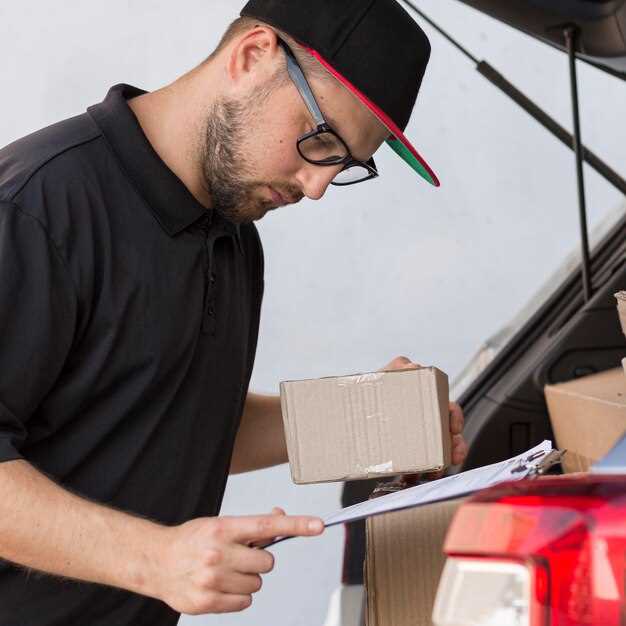How to prepare your vehicle for international shipping

When it comes to transporting your vehicle across international borders, preparation is key to ensuring a smooth shipping experience. The process involves several critical steps that must be followed to meet both transportation and legal requirements. Understanding these steps can save you time, money, and potential headaches as you embark on this logistical journey.
International shipping of vehicles requires careful consideration of various factors, including compliance with local regulations and choosing the right shipping method. From gathering the necessary documentation to ensuring that your vehicle is in optimal condition for transit, each phase plays a crucial role in the overall success of the operation. Failure to adhere to these guidelines may result in delays or additional fees.
This guide aims to equip you with the essential knowledge to prepare your vehicle adequately for international shipping. By following the outlined steps, you can facilitate a more efficient transport process and enjoy peace of mind knowing that your vehicle is ready for its global journey.
Document Requirements and Customs Clearance for Shipping
When preparing your vehicle for international shipping, understanding the document requirements and customs clearance process is critical. Each country has specific regulations that can impact the shipment of your vehicle. Ensure you thoroughly research the destination’s laws to avoid delays or additional costs.
Firstly, you will need to provide proof of ownership, typically in the form of the vehicle title or registration. This document verifies that you are the legal owner and have the right to ship the vehicle internationally. A bill of sale may also be required, especially for used vehicles.
Secondly, identification documents are essential. A valid passport or government-issued ID may be required to confirm your identity as the vehicle owner. Some countries may also necessitate that you provide copies of your driver’s license and proof of residency.
Additionally, if your vehicle is financed or leased, you must obtain a letter of authorization from the financial institution or leasing company. This letter confirms that they authorize you to ship the vehicle out of the country.
Customs forms are another crucial aspect of the shipping process. You must complete all necessary customs declarations, which typically include details about the vehicle’s make, model, year, and value. Be prepared to provide information about any modifications or modifications made to the vehicle, as these can affect its classification and duty assessment.
Lastly, ensure that you have all required import permits for the destination country. Some nations have strict regulations regarding emissions, age, or modifications, requiring specific permits to be obtained prior to shipping. It’s advisable to check with the destination country’s customs authority for a complete list of necessary documents and requirements.
By carefully preparing these documents, you can facilitate a smoother customs clearance process and avoid unnecessary complications during international shipping of your vehicle.
Steps to Prepare Your Vehicle for Transportation and Inspection

Preparing your vehicle for transport involves several crucial steps to ensure its safety and compliance during the shipping process. Follow these guidelines to prep your vehicle effectively.
1. Clean Your Vehicle
Start by thoroughly cleaning the exterior and interior of your vehicle. Removing dirt, debris, and personal items allows for a more accurate inspection of the vehicle’s condition before transport. Clean windows and mirrors for better visibility and inspection.
2. Inspect and Document Condition
Conduct a comprehensive inspection of your vehicle. Look for any existing damage, such as scratches, dents, or rust. Take clear photographs from multiple angles, including the interior and undercarriage, to document the condition of your vehicle prior to transportation.
3. Remove Personal Belongings
Remove all personal items from the vehicle. Shipping companies typically do not allow personal belongings in the vehicle due to liability issues. Ensure that there are no valuables or important documents left inside.
4. Check Fluid Levels
Inspect and top off all essential fluids, including oil, coolant, and brake fluid. Make sure your gas tank is no more than a quarter full, as excess fuel adds weight and can pose a safety risk during transport.
5. Disable Alarms and Anti-Theft Devices
Deactivate any alarm systems or anti-theft devices. This prevents unnecessary disturbances during transportation and ensures that the shipping company can move the vehicle without complications.
6. Inflate Tires
Check the tire pressure of your vehicle and inflate them to the recommended levels. Properly inflated tires reduce the risk of damage and make handling easier for the transport company.
7. Ensure Battery is Charged
Make sure your vehicle’s battery is fully charged. A dead battery can cause delays in loading and unloading. If the battery is old or weak, consider replacing it before the shipping date.
8. Gather Documentation
Prepare all necessary documentation for your vehicle, including the title, registration, and insurance information. Verify that you have a copy of the shipping contract and any other pertinent paperwork required by the shipping company.
9. Consult with Shipping Company
Reach out to your shipping company for specific requirements they may have regarding vehicle preparation. Different companies may have varying processes or regulations that need to be followed.
Following these steps will ensure that your vehicle is properly prepared for transport and inspection, minimizing the risk of damage and ensuring a smooth shipping experience.
Choosing the Right Shipping Method and Preparing for Transit

When it comes to transporting your vehicle internationally, selecting the appropriate shipping method is crucial. Two primary options dominate the market: container shipping and roll-on/roll-off (RoRo) shipping. Understanding these methods will help you make an informed decision based on your specific needs.
- Container Shipping: This method involves placing your vehicle in a secure container, which offers high protection against environmental factors and damages during transit.
- RoRo Shipping: In this approach, vehicles are driven directly onto the ship, making it a cost-effective and faster option. However, vehicles are exposed to the elements, which might increase the risk of damage.
Before you finalize your choice, consider the following factors:
- Vehicle Type: High-value or classic cars generally require container shipping for added protection.
- Budget: Compare costs associated with both methods to find the one that fits your financial plan.
- Delivery Timeline: Evaluate how soon you need your vehicle at its destination. Ships that offer RoRo may have faster transit times.
Once you’ve chosen the shipping method, proper preparation is essential for a smooth transit process. Here are some key steps:
- Clean Your Vehicle: A thorough cleaning of both the interior and exterior can help identify any damages and is often a requirement for inspections.
- Remove Personal Belongings: All personal items should be taken out as they may be prohibited during transport.
- Document Condition: Take clear photographs of your vehicle from various angles before shipping. This serves as evidence in case of any damages during transit.
- Check Fluids: Ensure fluids like oil and coolant are at appropriate levels but avoid a full tank of gas–most companies recommend leaving the tank close to empty.
- Disable Alarm Systems: Turn off any alarm systems to prevent unexpected disturbances while your vehicle is being shipped.
- Secure Loose Parts: Ensure that any removable accessories are secured or removed to prevent damage.
Following these steps for vehicle preparation ensures a streamlined shipping experience. By choosing the right transport method and adequately prepping your vehicle, you can minimize risks and ease the transition to your new destination.

